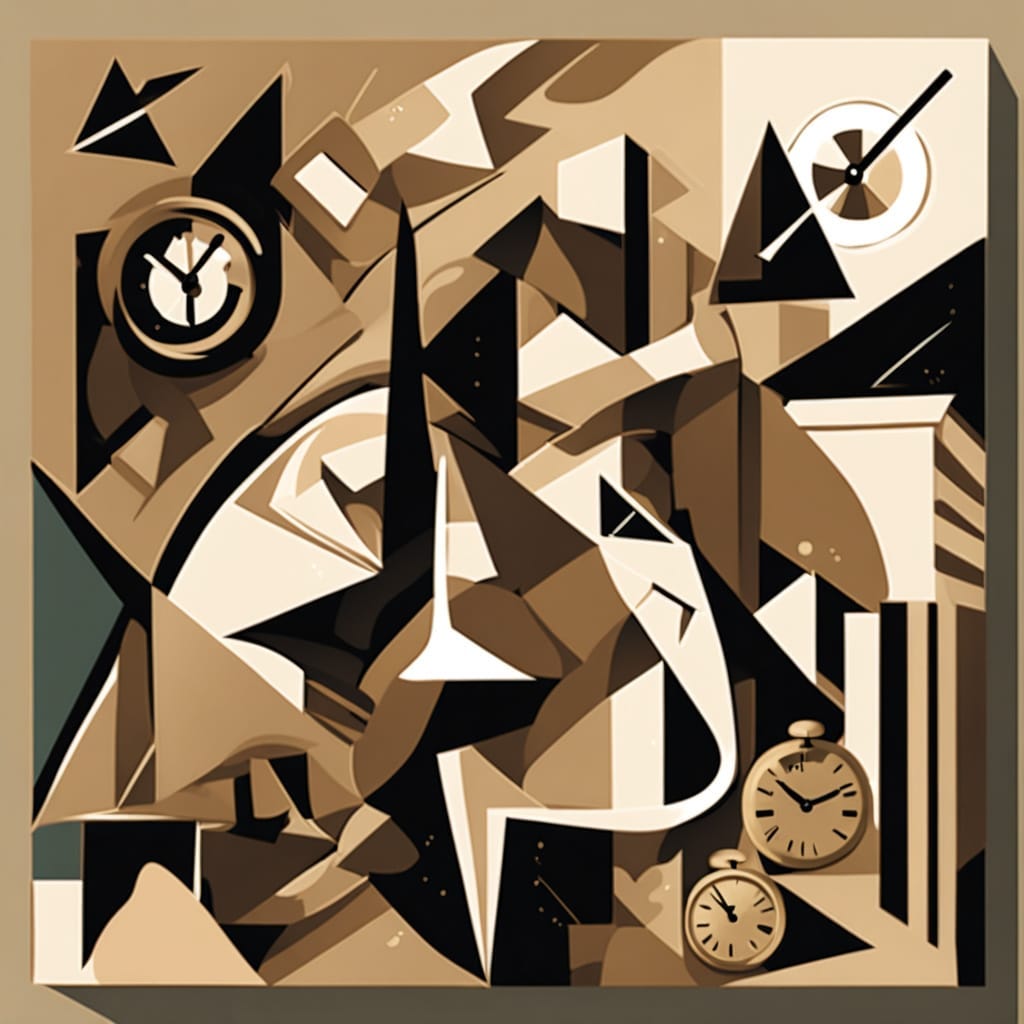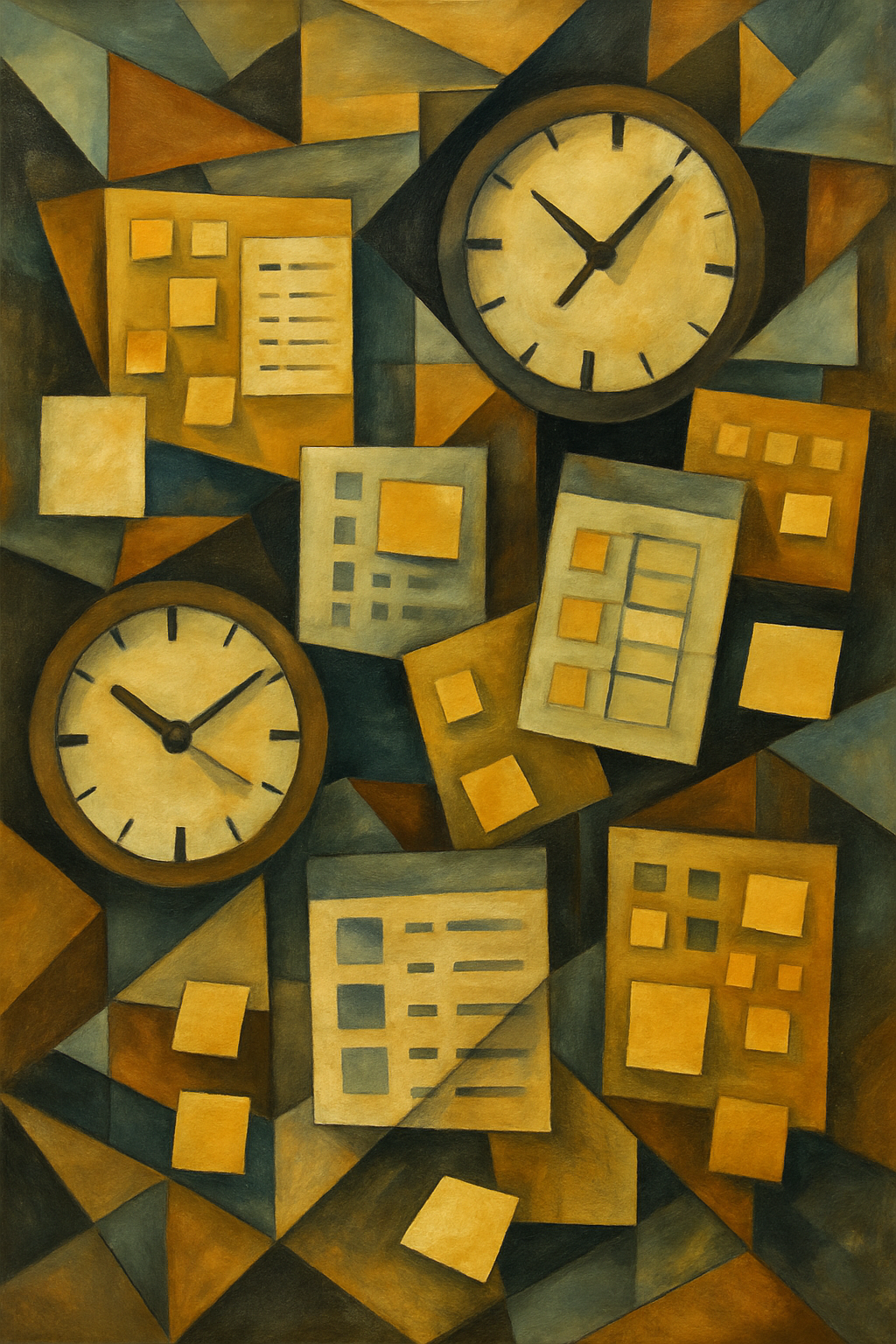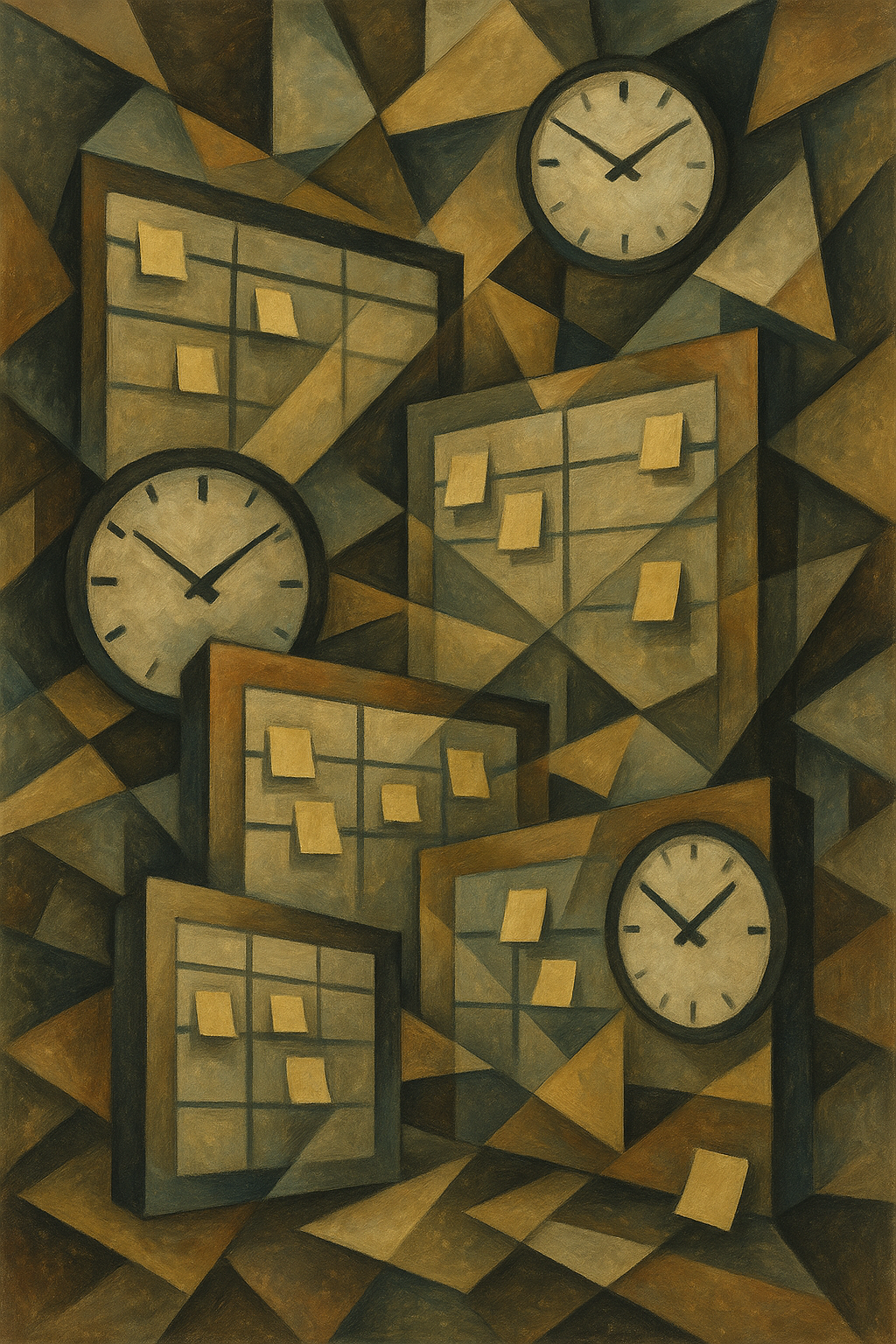
Welcome to Episode 4 of the Software Development Methodology Series — written on location at Corsa Moto Works, where my bike is in for a tune-up. If you’re curious how to find a great motorcycle mechanic while sipping stale waiting-room coffee, check out this guide to mechanic-finding greatness. Now, let’s rev the engines on this methodology matchup.
What Is It?
Scrum and Kanban are both Agile methodologies, but they come from different schools of workflow zen.
- Scrum is structured. You work in sprints (typically 2 weeks), you have roles (Product Owner, Scrum Master, Team), and daily standups where everyone announces what they did, what they’ll do, and what’s blocking them. It’s Agile in a business suit.
- Kanban is more like Agile in yoga pants. It’s visual (a big board of tasks), flow-based (no fixed iterations), and emphasizes limiting work in progress (WIP). It’s about tweaking the pipeline, not reinventing it.
Are They Still Relevant?
Oh yeah. Scrum is the darling of corporate dev teams, and Kanban is the go-to for maintenance, ops, and flow-focused teams. If your team isn’t using one, it’s probably reinventing a broken wheel.
Pros and Cons
Scrum
- Pros: Clear roles, predictable cadence, good for planning.
- Cons: Ceremony overload, rigid sprints can lead to rushed features or carryover.
Kanban
- Pros: Continuous delivery, great visual cues, flexible.
- Cons: Easy to let WIP explode, no sprint urgency = procrastination risk.

Strengths and Weaknesses
- Scrum shines with larger teams, product backlogs, and a need for velocity tracking.
- Kanban excels in environments with frequent interruptions and evolving priorities.
What Are They Used For?
- Scrum: Building new features, cross-functional teams.
- Kanban: IT support, operations, marketing pipelines, solo devs juggling ten things at once.
Example
Say you’re launching a pizza delivery app.
- In Scrum, you’d plan Sprint 1: “Implement pizza builder UI.” Everyone focuses on just that for 2 weeks. There’s a retro at the end with phrases like “We crushed it” or “We should align more.”
- In Kanban, tasks like “Add anchovies option” or “Fix pineapple bug” flow through a board from To Do → In Progress → Done — no fixed timeline, just continuous improvement.

Alternatives
- Scrumban (yes, it’s real): hybrid of the two.
- XP (Extreme Programming): like Scrum with more caffeine and pair programming.
- SAFe: if you want to Scrum at enterprise scale and drown in acronyms.
Is It the Subject of Any Famous Art?
Only if you count conference room whiteboards that look like abstract expressionism in sticky-note form.
How Popular Is It?
Scrum is king in big orgs and certified bootcamps. Kanban dominates among the “get-it-done-without-a-meeting” crowd. Both are trending steady. Neither is fading.
Who Uses It?
- Scrum: Atlassian, Microsoft, anyone with a roadmap and Jira.
- Kanban: Netflix, Spotify, and that one dev who never answers Slack but ships constantly.
Does It Work Well with AI?
Absolutely. AI can help manage WIP, suggest sprint goals, auto-summarize standups, or help write tickets. Tools like Linear, Notion, and GitHub Copilot integrate well with either.
Tech Stacks That Work Well
Doesn’t matter. Scrum and Kanban are methodology-agnostic. You could be coding in Rust, deploying with Kubernetes, or sketching UI in Figma. The methodology is in how you work, not what you use.

Interesting Tidbit
Scrum was inspired by a rugby analogy in a 1986 Harvard Business Review article. Kanban comes from lean manufacturing at Toyota, proving once again that dev teams and car factories have more in common than you’d think.
Final Thought
Scrum is structure. Kanban is flow. Choose your fighter. Or combine them. Just don’t make your standups an hour long. That’s not Agile. That’s punishment.
Art Prompt: A Cubist composition channeling the abstract geometry of Georges Braque, featuring a fragmented landscape of overlapping project boards, clocks, and sticky notes. Angular forms and muted earth tones dominate the canvas, symbolizing the clash between structure and fluidity. Lines intersect with sharp dissonance, and subtly rotated planes evoke the tension and harmony of timeboxed sprints versus continuous delivery.

Video Prompt: A fast-cut animation in Cubist style transitions from chaotic sprints with ticking clocks and burndown charts to the rhythmic flow of sticky notes moving effortlessly across a Kanban board. Incorporate jittery zooms and slice-angle transitions, set to a percussive soundtrack echoing the cadence of daily standups and the calm of Kanban pull limits. Perfect for TikTok or Reels.
Follow me for more humorous insights into software, art, and the occasional motorcycle maintenance adventure. Which side are you on: sticky note shuffle or standup circus? Comment below and let’s duke it out — methodology style.